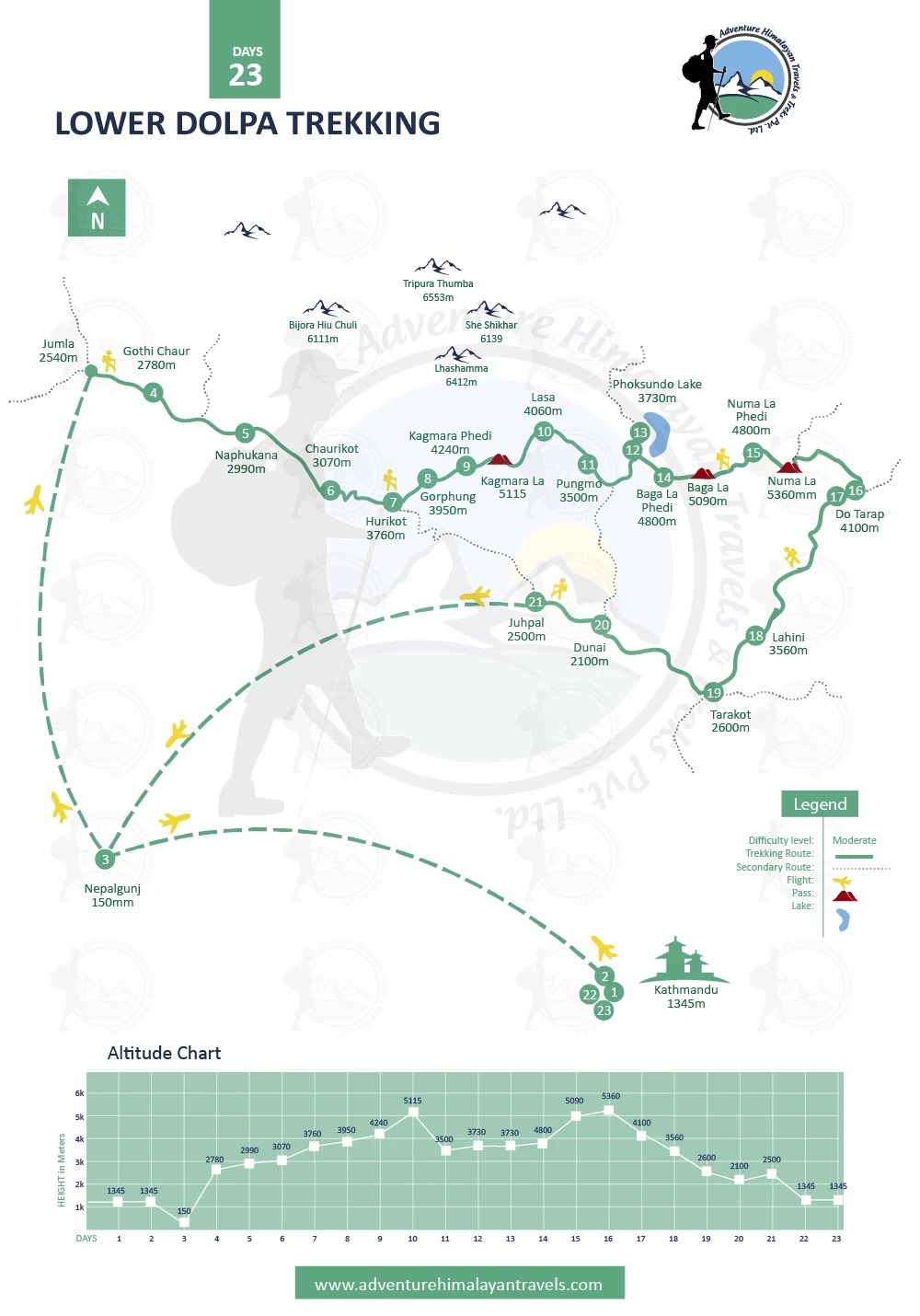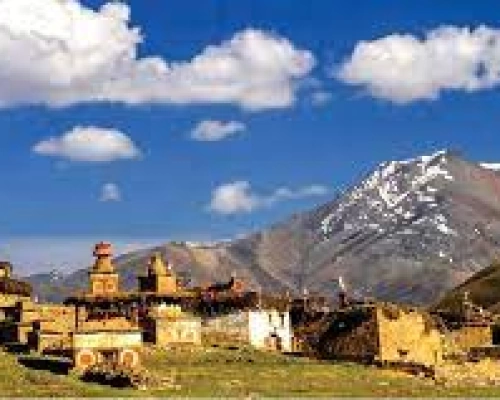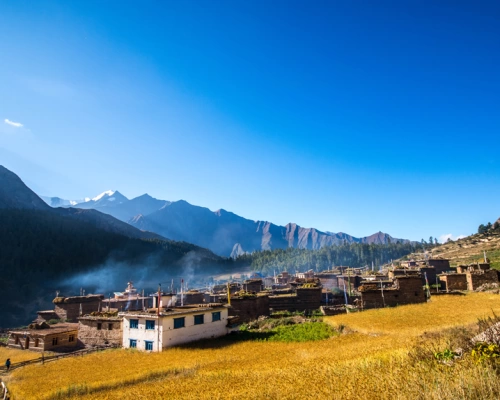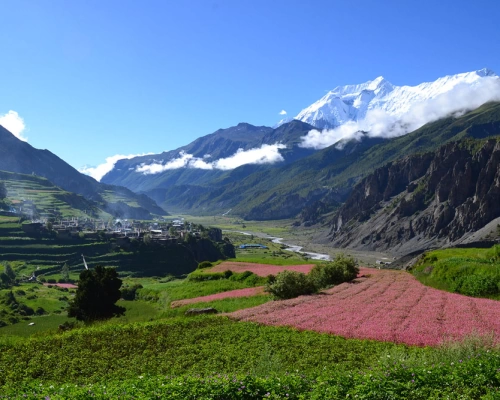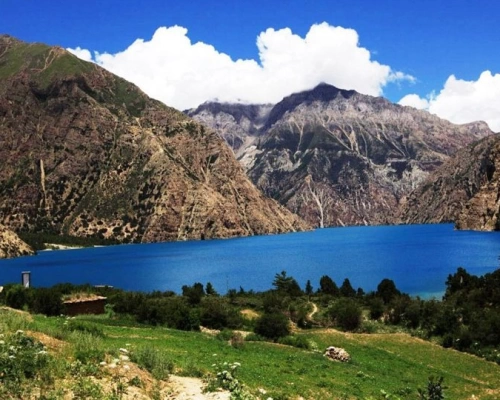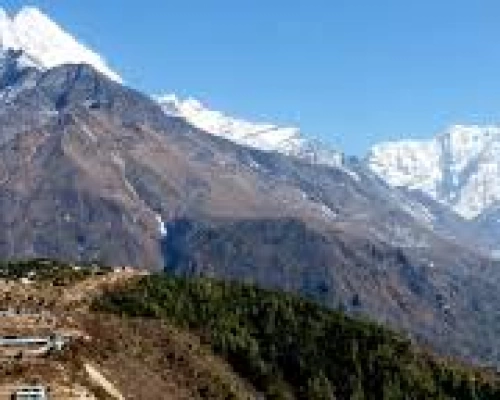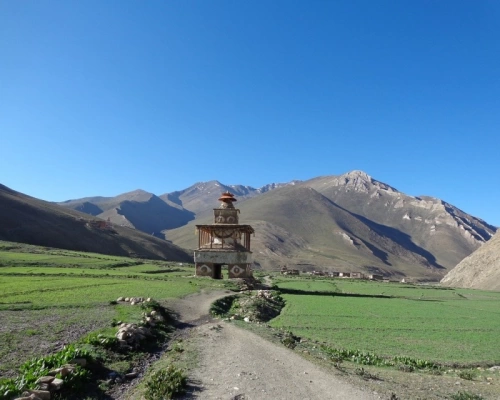Trip Overview
The Lower Dolpo Trekking, also called the Lower Dolpo Circuit Trek, offers you one of the most authentic trekking experiences in Nepal. Miles away from the capital city of the country, Kathmandu, behind the seventh-highest mountain in the world, Mount Dhaulagiri (8,167 m), almost totally cut off from urbanization, get ready to find yourself in the preserved world of ancient Tibetan culture and the Bon Po religion.
The Lower Dolpo Trekking Itinerary of 23 days takes you to one of the most isolated and highly restricted regions that was opened for tourism, Dolpo, in 1990, and Inner Dolpo only in 1992. The Lower Dolpo Trek itinerary is handpicked by experienced professional mountain guides with your safety, satisfaction, and hassle-free experience. Trekkers in the trans-Himalayan region cross at least three high mountain passes.
Therefore, for this Himalayan trip to Lower Dolpo that rewards you with the beautiful and diverse landscapes and unspoiled culture traversed by only a few, it is a must that you have a good level of physical fitness and have mentally made up your mind for the very basic living conditions. Through the largest national park of Nepal, also home to the deepest lake of the country, Phoksundo Lake, create unforgettable memories.
Bookings are now open for 2026 and 2027. We are offering group and early bird booking discounts on Lower Dolpo trekking costs. Do not worry; it is without any hidden cost, reasonable, and also ensures your visit meets the legal requirements. Meals, accommodation, transportation used during the journey, including flights, and the mandatory guide—the Lower Dolpo Trek Cost covers it all. Contact us and reserve your seat now.
What to expect on the off-the-beaten trekking path to Lower Dolpo?
While several Himalayan trekking routes in Nepal, such as the Everest Base Camp Trek, the Annapurna Base Camp Trek, the Kanchenjunga Base Camp Trek, and the Langtang Valley Trek, have changed into teahouse hikes, if there’s one route that still provides you a perfect spot for camping without massive crowds, it is the Dolpo region and its trek trials, like the Dolpo Trekking, the Dolpo Circuit Trek, the Upper Dolpo Trekking, and the Lower Dolpo Trek.
Like the rewards, like are the challenges, i.e., while you get to relish the mind-blowing mountain views and diverse landscapes in high-altitude, almost desert-like terrains, you explore another world within Nepal and other trekking trails in the rain shadow area. One must be aware of altitude-related challenges and push through unpredictable weather. Far from modern amenities, good preparation is essential.
Getting into the Lower Dolpo Trek Trail
On this Lower Dolpo Trek in Nepal, Jumla serves as the trek starting point. Even to reach here, one must board two mountain flights, one from Kathmandu to Nepalgunj and then to Jumla. While you can choose to drive, it is long and grueling, and there’s hardly anyone who would like to fall tired from the very beginning of the journey; hence, flight is the most convenient one, which is a rewarding experience once the journey begins.
The diverse landscape unfolds. From the lush valleys, dense forests, and villages, you gradually enter the desert-like Tibetan plateau area with sparse vegetation and human settlements. The higher you go, Rocky, the more the trails get, and behind the Dhaulagiri mountain ranges, the snow-capped peaks stand tall in contrast; an enriching experience awaits in the real wilderness, perfect for camping and stargazing.
Stunning mountain views in Dolpo, Nepal
Trekkers on the Lower Dolpo Trekking route can see several mountain peaks from start to end. While famous for trans-Himalayan scenery from barren highlands to lush valleys, a landscape that resembles Tibet and is also featured in the Oscar-nominated movie Himalaya (Caravan), the Dolpo Hiking Trail also provides you with a visual retreat of several snow giants, evoking a true off-the-beaten-path adventure.
On clear days, Mt. Dhaulagiri (8,167 m), the seventh-highest mountain, appears to dominate the eastern skyline. Kanjiroba Himal (6,883 m), Crystal Mountain (Shey Ribo Drukta), Putha Hiunchuli, ChurenHimal, Kungung La, Kagmara Range, and Norbung Kang are some of the major peaks in the Dolpo region, where turquoise Phoksundo Lake (bathing here is not allowed) adds to both scenery and cultural endeavors.
The Three Iconic Mountain Passes in the Lower Dolpo
For those seeking to test their endurance and skills in the remote Himalayas, the Lower Dolpo Trekking is just the right choice. While there are no technical climbs, as you cross at least three of the high mountain passes, the adrenaline rush is at its finest. The hike on the days to make through passes also begins before dawn to watch the sunrise, when often snowy trails are covered in the hue of gold, pink, and orange.
Kamgara Pass (5,115 m), Baga La Pass (5,090 m), and Numa La Pass (5,360 m) are the names of the mountain passes. At 5,000 m above sea level, proper acclimatization, fitness level, and packing list play major roles in its success of crossing. On rapid ascent, one may suffer from altitude sickness, and unpredictable Himalayan weather can further worsen the situation; therefore, prepare with adequate research.
Do Dharap and its unique culture
Among several traditional Nepalese villages dotted along the trekking route to Dolpo, a remote Nepal trek, are Gothi Chaur, Naphukana, Chaurikot, Hurikot, and Do or Dho Tarap. It is the largest village, offering you a deeper understanding of the typical mountain lifestyle. While other villages are inhabited by mixed ethnic groups of Nepal, including Magar, Gurung, and Chettris, Dho Tarap is home to communities sharing close cultural ties to Tibetans.
The strong influence of Bon and Tibetan Buddhism is noticeable. With stone-built houses, colorful prayer flags, and centuries-old monasteries like Ribo Bhumpa Gompa, the spiritual charm is one of a kind. 4,090 m above sea level, amidst the heart of the Lower Dolpo, Nepal, a fertile valley surrounded by rugged mountains, reaching here is like stepping into the living museum of Tibetan culture, and the warm hospitality of locals provides you with a lot to cherish.
Less trodden Himalayan trekking route of Nepal
Unlike many of the best high-altitude trekking trails in Nepal, like the Everest Base Camp Trek, the Annapurna Base Camp Trek, and the Langtang Valley Trek, the Dolpo Hikes, including the Lower Dolpo Hiking route, are some of the best off-the-beaten-path Himalaya trips that remain largely unexplored even during the peak trekking seasons of spring and autumn. It is also due to the area being highly restricted, allowing only a few.
Regardless, it has led to the raw authenticity full of true natural beauty, unspoiled Himalayan culture, and spiritual serenity, making the Lower Dolpo Trek an excellent option for those keen on being some of the first ones to make it to reach one of the hidden gems of Nepal. Away from modern tourism, here time seems to stand still, and local traditions thrive; it is a haven for solitude enthusiasts. Book now!
The Best Lower Dolpo Trek Route and Cost for the 2026 and 2027 Routes of Nepal
The 20 days for the Lower Dolpo Trekking Itinerary begin with your arrival in Kathmandu. An extra preparation day also includes visiting the UNESCO World Heritage Sites in the Kathmandu Valley, and the third day is the trip's official departure with an almost an hour-long flight to Nepalgunj directly from Kathmandu. Still, on the fourth day, you walk on foot to reach Gothi Chaur after a flight to Jumla from Nepalgunj.
I.e., Jumla is the Lower Dolpo Trek starting point, after which you make your way through various mountain villages to stop and rest and replenish your energy, like Naphukana, Chaurikot, Hurikot, Gorphung, and Kagmara Phedi. From here, trials are usually rugged with only a few villages and rarely any teahouses, perfect for camping, especially in Lasa and Pungmo, while in Phoksundo Lake and Ringmo, you can get teahouses again.
An exploration day at Phoksundo Lake: the Lower Dolpo Trek itinerary of 23 days then takes you to Baga La Phedi, Numa La Phedi, Do Tarap, Lahini, Dunai, Jupal, and back to Nepalgunj and Kathmandu. It is with two buffer days at Phoksundo Lake and Dho Tarap village, so you have enough rest after and before crossing the high mountain passes; hence, it is taken as the best route, including for the years 2026 and 2027.
Further, our customizable option means a personalized experience is our guarantee. While it may incur additional Lower Dolpo Trekking costs, that further exact price varies with group size, seasons, type of services included, and government licenses. With us, you are in safe and reliable hands. During colder nights, we provide extra sleeping bags so you stay warm, and it is with free airport pickups and drop-offs.

